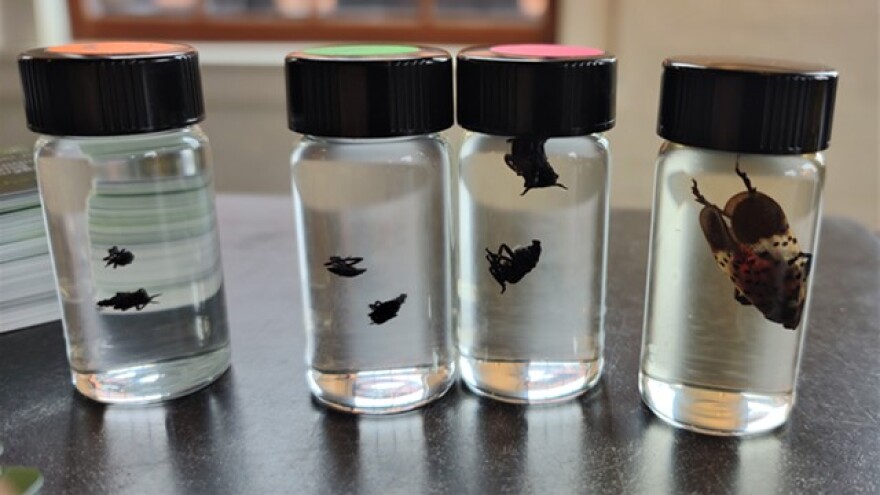Ecologists are sounding an early alert for Monroe County about the spotted lanternfly, an invasive insect that’s relatively new to New York and that presents a threat to agriculture.
The spotted lanternfly, of which a living specimen has yet to be found in Monroe County, is a brightly colored bug native to India, China, and Vietnam. It first appeared in the United States in 2014, when it was found in Berks County, Pennsylvania. There, the lanternfly faced few predators and a smorgasbord of local crops, though grapevines and maple trees became quick favorites.
A 2020 report from the Pennsylvania State College of Agricultural Sciences warned, if not contained, the spotted lanternfly could cost the state $324 million annually and upward of 2,800 jobs. But despite efforts to contain the threat, the lanternfly spread through much of the mid-Atlantic in ensuing years, including New York, New Jersey, and Delaware.

On Friday, House Rep. Joe Morelle joined researchers from Cornell University as well as representatives of the Finger Lakes region’s beer and wine industries to warn of the lanternfly’s destructive potential, with specific attention paid to vineyards and hop bines.
“The spotted lanternfly has gripped Pennsylvania’s agricultural economy for years, which means it’s time for New York state to act now,” Morelle said. “If we delay, we risk having the spotted lanternfly wreak havoc, literally, on our agricultural economy.”
The spotted lanternfly was first spotted in New York in 2020, and since then the state has experienced several infestations, mostly in the southeastern counties. And while no reports of live lanternflies have come from Monroe County, dead bugs have been spotted within its boundaries over the past year. The dead bugs have been found primarily in warehouses — they likely hitchhiked from more infested areas, said Brian Eshenaur of Cornell’s Integrated Pest Management program.
Eshenhaur said those sightings in Monroe County are an early warning of what could come.
“We haven’t had live insects here, we’d be very concerned if we did,” Eshenaur said. “But it’s a warning when we see dead insects arriving here, they probably died on the way. The potential to bring a live one is high.”
Dealing with invasive species is a daunting task, and New York state is already contending with non-native flora and fauna. For example, the emerald ash borer, a tree-eating beetle native to China, has devastated stands of ash trees across the state.
Other high-profile invasive species include zebra and quagga mussels. The mussels are native to Eastern Europe, but they became established in the Great Lakes after cargo ships discharged ballast water bearing species. The mussels cause a list of problems, from jabbing swimmers in their feet to fixing themselves to the side of vessels and clogging intake pipes.
Catching the lanternfly early is key to avoiding the mass spread found with these other cases, Eshenaur said. The goal is ultimately to completely eradicate the insects from New York. Last year, Morelle helped secure $4 million from the U.S. Department of Agriculture to help eradicate the spotted lanternfly.
“I know this will sound unusual, but if you see a spotted lanternfly, you should immediately kill it,” Morelle said.
Specifically, the state department of agriculture advises that, if you see a spotted lanternfly, take a photo and send it to spottedlanternfly@agriculture.ny.gov, crush it with “your foot, swatter, or other means,” and look around the surrounding area for more bugs or its waxy egg sacs. It also advises keeping an eye out for more lanternflies in the future.
Vigilance, Morelle and company said, is key to protecting business owners like Colleen Hardy of Living Roots Winery, who sources many of her grapes from vineyards around Keuka Lake.
“We’ve been quite lucky it hasn’t impacted us, and we’d like to keep it that way,” Hardy said.
Gino Fanelli is a CITY staff writer. He can be reached at (585) 775-9692 or gino@rochester-citynews.com.

